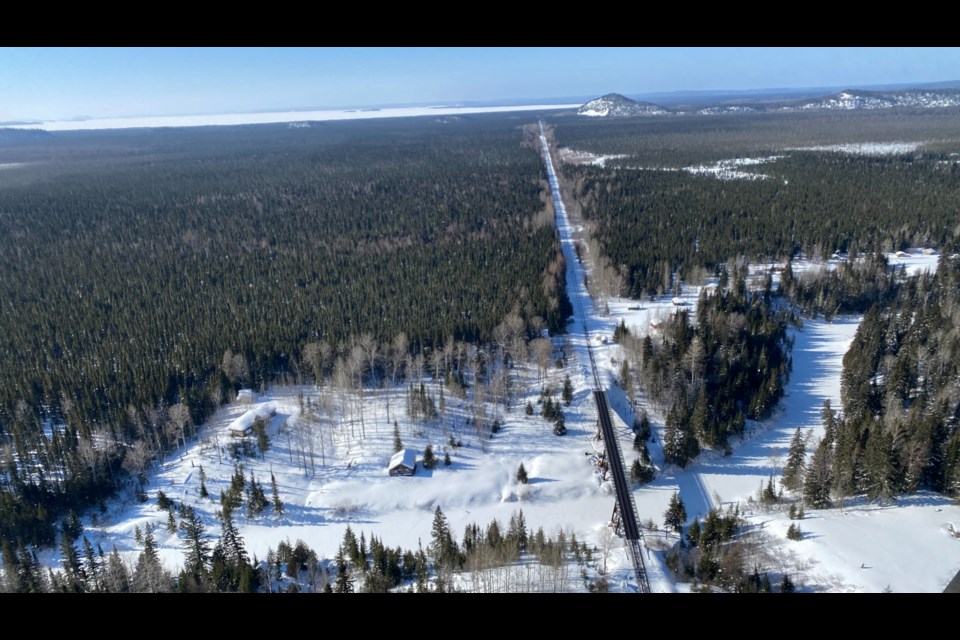Thunder Bay was once known as one of the forest products manufacturing capitals of Canada.
These days, the city looks to be shaping up to become the North American centre of lithium processing for the electric vehicle revolution.
Australia’s Green Technology Metals is looking to fast-track one of its four lithium properties in the Armstrong area of northwestern Ontario into mine production.
The company is further eyeballing Thunder Bay as a regional processing hub to convert lithium concentrate mined from its flagship Seymour Project into battery-grade material for the electric vehicle industry.
“We’re going to go all the way,” Luke Cox, the company’s CEO, boldly announced at a battery minerals conference held in Perth in early April, about their goal of becoming a major North American lithium player.
The way things are evolving, Thunder Bay could conceivably host three lithium conversion facilities.
Green Tech joins Avalon Advanced Materials of Toronto and their plans for a processing plant in the city. Frontier Lithium of Sudbury has a pair of deposits near the Manitoba border but hasn’t divulged where its plant would go, except near a Great Lakes port.
Cox mentioned to the conference audience that the Canadian government has specifically urged them to consider building a lithium hydroxide processing plant in Thunder Bay to feed the number of gigafactories sprouting up across Canada and the U.S.
As a relatively new exploration entrant in the northwest, the company has amassed land holdings covering 35,000 hectares, through staking and option agreements.
In Thunder Bay, Cox said they’ve already started optioning ground in the city for a planned lithium hydroxide plant.
Green Tech secured some financial backing last week when Lithium Americas, a Vancouver-based miner in Argentina and the U.S., announced that it had made a US$10-million “strategic equity investment” that will make them a five per cent shareholder in the company.
The pair also signed a non-binding framework agreement to consider establishing a strategically located integrated lithium business in Ontario. The term sheet covers the rapid advancement of the Seymour Project into an operating mine, all the necessary downstream processing, and sourcing off-take customers to create a supply chain to the automakers.
Green Tech’s current focus is the Seymour Project, 250 kilometres northeast of Thunder Bay and at the top end of Lake Nipigon. At the north portion of the property, the North Aubry deposit contains an estimated resource of 4.8 million tonnes of lithium oxide, grading 1.5 per cent.
Cox, a former lithium mine manager from Western Australia, said there are enough tonnes in the ground to go into production, and they fully intend to “as quick as we can.”
He described the deposit as “one fat slab” of lithium-bearing pegmatite that’ll be easy to excavate. Pegmatite is a typical host rock for finding lithium.
“Mining is going to be cream-digging,” he remarked.
Though operating on the ground for only a few months, the Australians have taken a fairly aggressive approach to exploration by striking an agreement with the local Whitesand First Nation, starting environmental and various technical studies, and getting their paperwork in order to apply for permits to begin mining.
The company’s timelines are to tentatively go into production sometime during the first quarter of 2024.
Cox mentioned they’ve only scratched the surface of Seymour’s potential as the property is littered with a number of lithium-bearing pegmatite prospects.
That’ll be attacked this spring and summer by drilling one prospect, dubbed Pye, a kilometre to the east of North Aubry, and a ground campaign that involves launching drones to craft a downloadable 3-D map of the area and employing various field technologies to confirm the presence of lithium.
A 24-person exploration camp has been established for this summer.
The area has good infrastructure. CN’s trans-Canada line tracks through the southern half of the property. The proposed Jackfish hydroelectric power project is eight kilometres away.
Because of the abundance of hydroelectric power in Northern Ontario, Cox said his company can deliver “clean, green” lithium to the market.
The company also has a number of projects in the exploration and development pipeline that they’re excited about, including Wisa, in the Fort Frances area, just north of the Minnesota border, Root Lake, southwest of Pickle Lake, and Allison, in the Kenora area.
“We’ve got all the ingredients to become a fully integrated lithium producer in Ontario.” he said. “This is a market that is rapidly gaining speed at a record rate of knots.”
Cox said they’ve assembled a board of directors with expertise in mining, processing and financing. The company’s general manager, Matt Herbert, has permanently moved to Thunder Bay to set up operations in the northwest.
Cox said a few members of his Thunder Bay team managed to finagle some face time with Doug Ford on the premier’s recent visit to Thunder Bay.
“We actually had a chat. (We said) ‘We’re ready to go, you just need to fast-track our permits.’”
Both the federal and provincial governments have tabled critical mineral strategies and are squarely behind Canadian lithium explorers, he said, and are prepared to invest millions and billions of dollars to support the creation of a North American electric vehicle supply chain.
